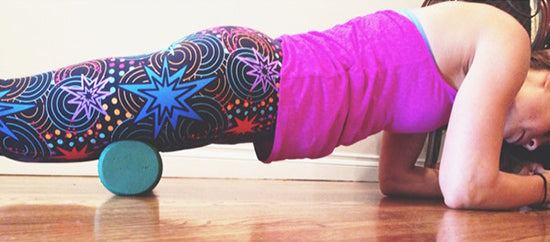As a personal trainer, I hear my clients ask and worry all the time about running. It's as if there's this huge amount of weight attached to running: pressure, anxiety, fear.
Running can be for everyone, you can run, too!
If you can walk from the couch to the refrigerator, you are not too heavy or slow to run. If you can go to a 45 minute spin class, you can run outside for a few miles.
Running doesn't imply that you are running a marathon. It doesn't mean you have to run everyday. Having an aversion to running just for the sake of it is only limiting yourself. I move through so many emotional and psychological blocks when physically running.
Here are my suggestions if you are open to the concept to running:
- start on a treadmill or the dirt, jogging slowly for a 30 sec-1 minute, walking recovery for 2 min.
- after 5 to 10 minutes of this, take your jog speed a little faster to a light run, increasing your interval from 30 seconds to a minute or a minute to 90 seconds. Walking recovery for 90 seconds.
- after 15 to 20 minutes, stop.
- walk for another minute or two, slowing the heart rate and letting the muscles relax
- stretch AFTER your run, not before.
- Do these stretches:
- take your right ankle over your left lower thigh (above the knee) and bend your knees as if you're sitting in a chair. you can hold onto the railings of the treadmill or hands and back against a wall.
- take your left ankle over your right lower thigh and repeat above directions. These two exercises stretch the hip flexors and glutes.
- stand up straight, legs strong, cross right foot over left foot and begin to lean over. you can slightly bend your knees so you can get deeper into the position. This will stretch the IT Band.
- stand up straight again and repeat the above, crossing the left foot over the right foot and leaning over.
- stand erect again, this time grabbing your right foot or ankle behind you, bottom of the foot to the glute, stretching the quadracept.
- repeat number 5 with the left foot.
- stand up straight and take your arms to the sky, reaching and stretching from your hips.
- remember that every single run after the first is easier
If you get shin splints easily, it means you have overworked the tibia and you definitely want to start on a treadmill or dirt. Also, avoid going downhill, and avoid sports that have a lot of back and forth movements like tennis or basketball. Shin splints can also be caused by a person running to long, too hard or training to intensely.
![]()
to stretch the shins after a run:
- stand flat foot, knees slightly bent and lift the toes with the heel of foot on the ground. Do both feet until you can’t do it any more.
- Find a step and hang the heel part of your foot over the edge. Great shin stretch.
- if you have a little more time, the lunge is great too for your legs in totality.
Here are a few more questions commonly asked:
Q. What shoes do I buy? do I need to buy expensive running shoes?
A. A pair of light, good fitting sneakers or walking shoes works fine. You don't want to waer old sneakers that don't fit or are worn down. but you don't need to buy new shoes. you're not going to be doing high mileage. If you DO begin to run more often, and further, you can go somewhere that isn't a specific running store/ specialty and you can find cheaper shoes. I like ascics a lot and bought my last pair for 45 dollars.
Q. I can't run because I'll get hurt and have to stop.
A. True, runners get occasional muscle and joint aches, but these should go away quickly. Treat muscle aches with ice or an anti inflammatory gel or cream like Traumeel (homeopathic). Jeff Galloway (running coach, marathon runner) began teaching beginners in 1974, he was worried about some of the participants. "But everyone finished the class," says Galloway. "you don't get inured if you follow the 'no huffing, no puffing rule." Also, take it slow starting back into a running regiment. Take a few days in between running to let your body recover. And *listen to your body!!!!

